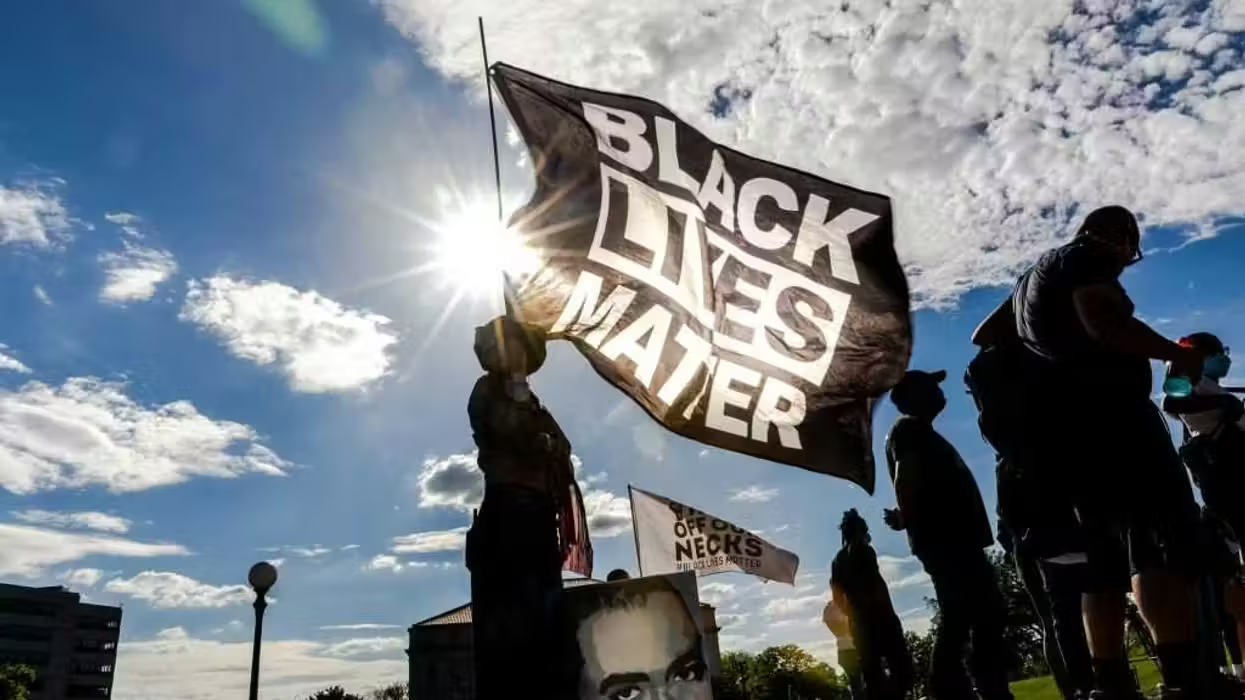
© 2025 Blaze Media LLC. All rights reserved.
Former Olympian Gives Us the Scoop on Curling (and What the Deal Is With Norway's Pants)
February 11, 2014
"This is a gentleman’s sport."
To say John Benton knows a thing or two about curling is an understatement. The 44-year-old from Minnesota has been learning to deliver and sweep on ice since he was 6 years old.
In 2010, Benton qualified for and competed on Team USA in Vancouver for the Olympics. Now, the national team coach is giving TheBlaze a bit of insight into what it takes to be a curling athlete and what to look for at this year's games.
 USA's John Benton watches his delivery in a men's curling match against France at the Vancouver 2010 Olympics in Vancouver, British Columbia. (AP/Jae C. Hong)
USA's John Benton watches his delivery in a men's curling match against France at the Vancouver 2010 Olympics in Vancouver, British Columbia. (AP/Jae C. Hong)
The obscure winter sport seems to gain attention on a worldwide scale every four years when it's featured at the Olympics, but it only became a medaling sport less than two decades ago, in 1998. Its relatively recent inclusion as a regular feature in the games makes its progress over the last 16 years obvious to those following the sport.
"We used to be able to get away at competitive level without being in the greatest of shape," Benton said of curling athletes. "We were always athletic but not necessarily fit. Fitness has now become a very big part of the game."
Benton called it part of the natural evolution of the sport on the Olympic scale.
"What’s happened is internationally, countries have been dedicating more and more resources to the sport and to the athletes. This has driven up the level of competition," Benton said. "Naturally, everyone is looking for an edge to find a way to get another shot per game out of every player.
 John Benton, right, and Jeff Isaacson, left, of the United States brush the ice backdropped by their skip John Shuster during the men's curling round robin game between Canada and the USA during the Vancouver 2010 Winter Olympic, Feb. 22, 2010 in Vancouver, Canada. (Getty Images/Jasper Juinen)
John Benton, right, and Jeff Isaacson, left, of the United States brush the ice backdropped by their skip John Shuster during the men's curling round robin game between Canada and the USA during the Vancouver 2010 Winter Olympic, Feb. 22, 2010 in Vancouver, Canada. (Getty Images/Jasper Juinen)
"To sweep better and take it to another level, means you start to look at things like strength and endurance," he said.
Benton outlined just how much athleticism actually goes into the sport. It's more than you might think just watching it on TV.
"Curling is one of the most highly rated anaerobic sports," he said.
What's more, curlers will often compete in several matches a day.
"The other piece that people don’t realize is that competitions are about two hours long. In the Olympics, they won’t play more than two games a day, but that’s still five hours," he said. "There aren’t many other sports where that happens."
In a typical match, a sweeper will walk up to 2 1/2 miles, according to Benton.
To be competition-ready, Benton said curling athletes mostly engage in cross-training, focusing on strength and endurance. This, for many, includes biking and weight training, specifically for the core, back, shoulder and chest muscles because "sweeping requires a maximum amount of pressure on ice," Benton said.
The mental preparation for the game is much like any other sport. Benton said in training they use infrared cameras to help determine how much heat is being applied to the ice. There are also special brooms that can measure the pressure on it. Video analysis and statistics come into play as well.
And then there's the factor of team communication.
"It's not just one player on team, all four players need to understand that," Benton said. "To maintain your ability to manage your responsibility as a communicator, that takes a lot of work."
While there might be a lot of talking on the ice among a team, Benton said there isn't much "trash talking" against the competitors.
"This is a gentleman’s sport," he said with a laugh, noting that it has similar etiquette rules as golf or tennis. "We're never out there to humiliate an opponent and we don't knowingly do things to distract them."
He acknowledged that there is some "good-natured jabbing and poking" at each other before and after games, partly because competitors, even from other countries, are very familiar with each other.
The biggest take away for those tuning in during the Olympics this year, Benton said, is to think of the game like chess, in that the opposite team will always be trying to anticipate their opponent's next move.
According to the World Curling Association, the sport dates back to the 16th century. It's played with two opposing four-person teams and a 44-pound granite stone. On a rectangular ice rink, the stone is set in motion toward the target called the "house." Along the way players, use rubber brooms to sweep the ice and guide the stone along the way. Sweeping reduces the stone's "curling," guiding it on a straighter path, Scottish world-champion curling athlete David Murdoch explained in a video about the sport.
Sixteen rocks are thrown with the final score calculated based on their final position in the house. A point is awarded for every rock that is closer to the center of the house, compared to those of the other team.
For more on the game's basics, check out Mashable's infographic that lays it out nicely:
And you can watch this introduction to curling as told by Scottish world-champion curling athlete David Murdoch:
But now to everyone's burning question after the Norwegian team made such waves with their outlandish pants last year and introduced a similarly unorthodox pair this year for the Olympics: What do other countries think of the pants?
 In this image provided by Loudmouth Golf, members of the Norway's Men's Olympic Curling Team from left Thomas Ulsrud, Torgor Nergard, Christoffer Svae, and Havard Vad Petersson wear their new Sochi 2014 suits as they pose for a photographer in New York Tuesday Jan. 21, 2014. Yes, Norway�s men�s team is back with their crazy, funky pants. And they'�ll be more outrageous than ever when the players emerge for their first game at the Ice Cube. (AP/Cassie Kovacevich, Loudmouth Golf)
In this image provided by Loudmouth Golf, members of the Norway's Men's Olympic Curling Team from left Thomas Ulsrud, Torgor Nergard, Christoffer Svae, and Havard Vad Petersson wear their new Sochi 2014 suits as they pose for a photographer in New York Tuesday Jan. 21, 2014. Yes, Norway�s men�s team is back with their crazy, funky pants. And they'�ll be more outrageous than ever when the players emerge for their first game at the Ice Cube. (AP/Cassie Kovacevich, Loudmouth Golf)
"I really thought that when I left Vancouver I'd never have to hear that question again," Benton said. "I’ve gotten to know those guys and anything that can attract more attention to the sport is a good thing. But, personally, I've had enough of the pants."
Featured image via Shutterstock.
Want to leave a tip?
We answer to you. Help keep our content free of advertisers and big tech censorship by leaving a tip today.
Want to join the conversation?
Already a subscriber?
more stories
Sign up for the Blaze newsletter
By signing up, you agree to our Privacy Policy and Terms of Use, and agree to receive content that may sometimes include advertisements. You may opt out at any time.
Related Content
© 2025 Blaze Media LLC. All rights reserved.
Get the stories that matter most delivered directly to your inbox.
By signing up, you agree to our Privacy Policy and Terms of Use, and agree to receive content that may sometimes include advertisements. You may opt out at any time.






